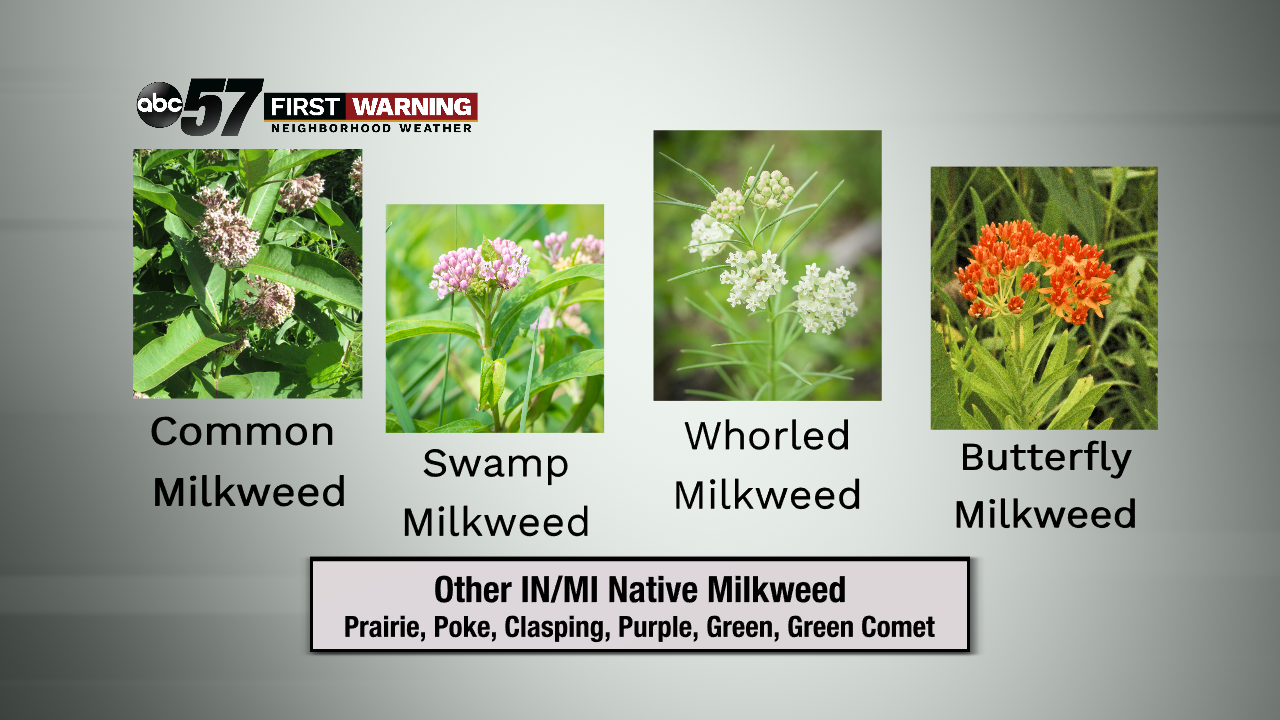How we can help a declining Monarch butterfly population
The temperatures are staying warmer and within the month we will start see monarch butterflies migrating through Michiana! Unfortunately, the Monarch butterfly population has decreased by 90% over the past twenty years.
In June, a decision will be made whether to protect the Monarch under the Endangered Species Act or not. Still, we can do a part in helping the butterfly population here. It is a perfect time to plant milkweed so that we can grow new habitat for the monarchs as they migrate north.
The butterfly population has declined so much due to urban development and the use of herbicides, which kills the milkweed plant. You see, milkweed is the only plant that monarchs will lay eggs on, and therefore, they are the breeding ground for new butterflies to come to life. These newly born butterflies will then finish out the migration.
There are a ton of different milkweeds, and when they flower in spring, they smell very nice. If you plant milkweed, you must plant a species that is native to our area.
There are some stigmas around milkweed, because they can in fact devastate farmland crops, but they are not invasive. Also, animals that eat milkweed could be poisoned, but the plant does not taste good so most animals avoid it.
It is safe to plant in your garden, in your backyard or along the side of your house and along roadways. Here are some tips for planting milkweed.
We can do a part in helping the monarch butterfly population, with the treat of seeing them in our own backyards. If you would like to see milkweed and butterflies in late spring and summer, local forest preserves like Bendix Woods in New Carlisle has an abundance of milkweed plants.


